Picking the Right Studio Centerpiece: What’s the Best 8+ Channel Interface for the Serious Studio?
Finding the right centerpiece for a studio is exciting and overwhelming at once. The enthusiasm we have for the recent advances in technology is offset by the anxiety that comes with changing up a rig or learning new software.
Ultimately, upgrades become necessary with time, and having a studio or a remote recording rig means finding a centerpiece that works well with your professional style. It’s at once a deeply personal and incredibly practical decision.
Fortunately, there is no lack of options—or price points—on the market. But for the sake of this roundup, we opted to evaluate interfaces that feature 8 built-in microphone preamps, allowing them to act as an all-in-one solution that will stand up to the needs of a wide variety of users.
One of the most challenging things about being a drummer in the studio—or just working with them—is the perpetual need for 8 or more channels. While your singer/songwriter and EDM producer friends are living in absolute bliss with just 2 to 4 channels, drummers like me (and the people who love them) are relegated to be on a constant quest for more I/O.
So, for this comparison and buyer’s guide, we mainly focused on tracking drums for the practical analysis of each of these unique interfaces. We also tested each interface’s console emulation functions, especially in the area of talkback and cues.
The 8-preamp criteria precluded some of the otherwise excellent interfaces from Steinberg, RME, Avid and others that did not offer an 8-pre configuration. However, in many cases, smaller versions of the interfaces that did make this list are also available for those with more limited recording needs.
Mic pres that come built in to digital interfaces have often gotten a bad rap in the past, but the reality is there is a market for the convenience, compact footprint, and cost-effectiveness of built-in preamps that is just not going to go away. Accordingly, built in mic preamps have been getting a lot better for a while now.
The now-historical MOTU 896 was a good example of an early centerpiece that had preamps with professional headroom. More recently, high-end built-in pres have become a reality, and the advent of “in the box” preamp modeling has made virtual boutique mic pres a real option too, both of which we’ll see examples of below.
Below, you’ll find some of the most important stats, and my own impressions from working with 5 of the best 8+ channel centerpiece interfaces out today.
Do you have your own opinions on these, or any we left out? Please let us know about your favorite options—or your own unmet needs—in the comments below.
Universal Audio Apollo x8p
$3299 street price
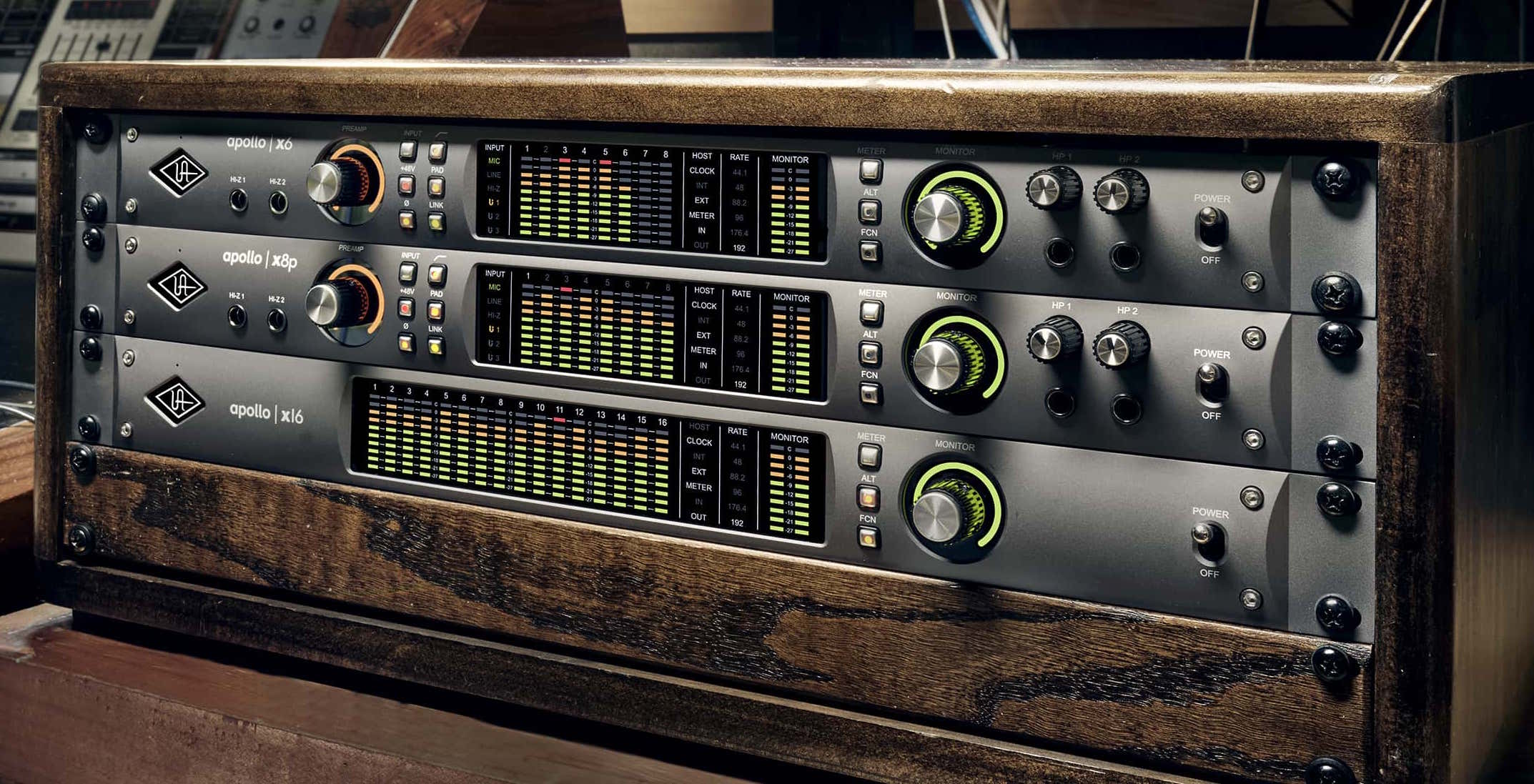
The Apollo x8p (center) offers 8 built in mic pres with UA’s “Unison” modeling technology and some tremendous extra power for mixing and realtime recording effects.
There’s a yin and yang to good music production—a constant fusion of classic and modern—and Universal Audio continues to nail it.
Everything about the Apollo seems designed to make a real impression right away. Even the experience of unpacking the Apollo x8p is like entering a finely-curated museum, but then you realize you are allowed to touch the paintings.
A simple Thunderbolt 3 into a Mac Mini or MacBook Pro and you are rolling with inconsequentially microscopic degrees of latency. Even the satisfying “click” of the real on/off rocker switch is most welcome. There are also quality hardware function knobs, big LED meters, and a slick modern look that means business.
In contrast, first-time registration can be a little more cumbersome than average, and somewhat sales-oriented too, wowing your brain with all the additional purchases of Fairchild compressors or Neve 88RS console strips you could make to upgrade your package even further.
One I was set up, I was especially impressed by how elegantly the UAD software integrates with your desktop, and the first thing you see is a handy usage meter that shows how much of the Apollo’s CPU is in use. This is vital since the UAD plug-ins are CPU-intensive, circuitry-based emulations of the real thing. In many cases, they both sound great and require a great amount of on-board processing power to run!
Universal Audio has made it a huge part of their business plan to save classic analog studio pieces for use within the digital realm. Like transferring and restoring old films to new digital HD formats, this is a noble pursuit which should result in greater accessibility, fewer patch bays, and lower hourly studio rates.
The drawback is the lack of the true analog path, but if you ask some of the best ears in the business, the difference between real and modeled is getting smaller and smaller with every new release.
The included Console program offers additional, redundant control for just about everything in the Apollo from from mic/line selection to artist talkback. This control program really stands out from the pack in terms of both its wonderfully retro feel and practical modern workflow.
Headphone cues are easily mixed to separate headphone sends and the talkback function is engineered to work right away without any tweaking. You can give a recording vocalist some compression and reverb through Console’s no-latency UAD monitor. Then, if you like that sound (which is easy to do with UAD plug-ins) you can hit the UAD “record” function to record those plug-ins and save yourself some mixing hours—and processing power—later down the road.
It’s hard to resist being sold on working with UA’s Unison technology. The moment you realize you can work with legendary (and licensed) preamp models at the source, and in such a well-integrated way, is a bit of a game-changer.
The choices here run the gamut from vintage to modern, but many of them are not exactly free. The basic bundles come with a good number of coveted tools, but there is a whole library of additional plugins to be had as upgrades.
At first, the sticker prices for some of these additions can seem a bit overwhelming, but UA runs frequent coupons, promotions, bundle options and big sales, where and you can put together a respectable virtual rack without spending too much. (And to be fair, even full price on any of the UAD plugins is a fraction of what the equivalent hardware would cost.)
You can fully demo any release, and there is the reassuring consumer confidence that UA has gotten Neve, SSL, API, Avalon, and Manley to license and endorse their circuit emulations, rather than simply providing the common generic model numbers you’ll see on so many plug-in menus.
But are they that good? Of course they are! Stunning really. It’s almost old news at this point that they can nearly match real hardware outboard and lunchboxes in most cases.
Creative mixing becomes even more inspiring when you see the names and faces of iconic original pieces pop up with pristine graphics and control. On drums for example, you can use API Vision preamps on close mics, Neve 88RS on the overheads, and send everything to the SSL 4000 bus compressor. Then, how about some virtual echo chamber from Capitol or Ocean Way?
Of course, all that fun comes at a cost in terms of processing power, and any UA set up will likely benefit from additional interfaces or DSP accelerators to provide additional processing and make the most of the potential power of a professional UAD system.
While not the least expensive option on the list, it quickly became clear why UA is able to charge a premium for their tools. From workflow to build quality to flexibility to sound, the Apollo series really stood out as one of the best options available.
Antelope Orion Studio Synergy Core
$2800 street price
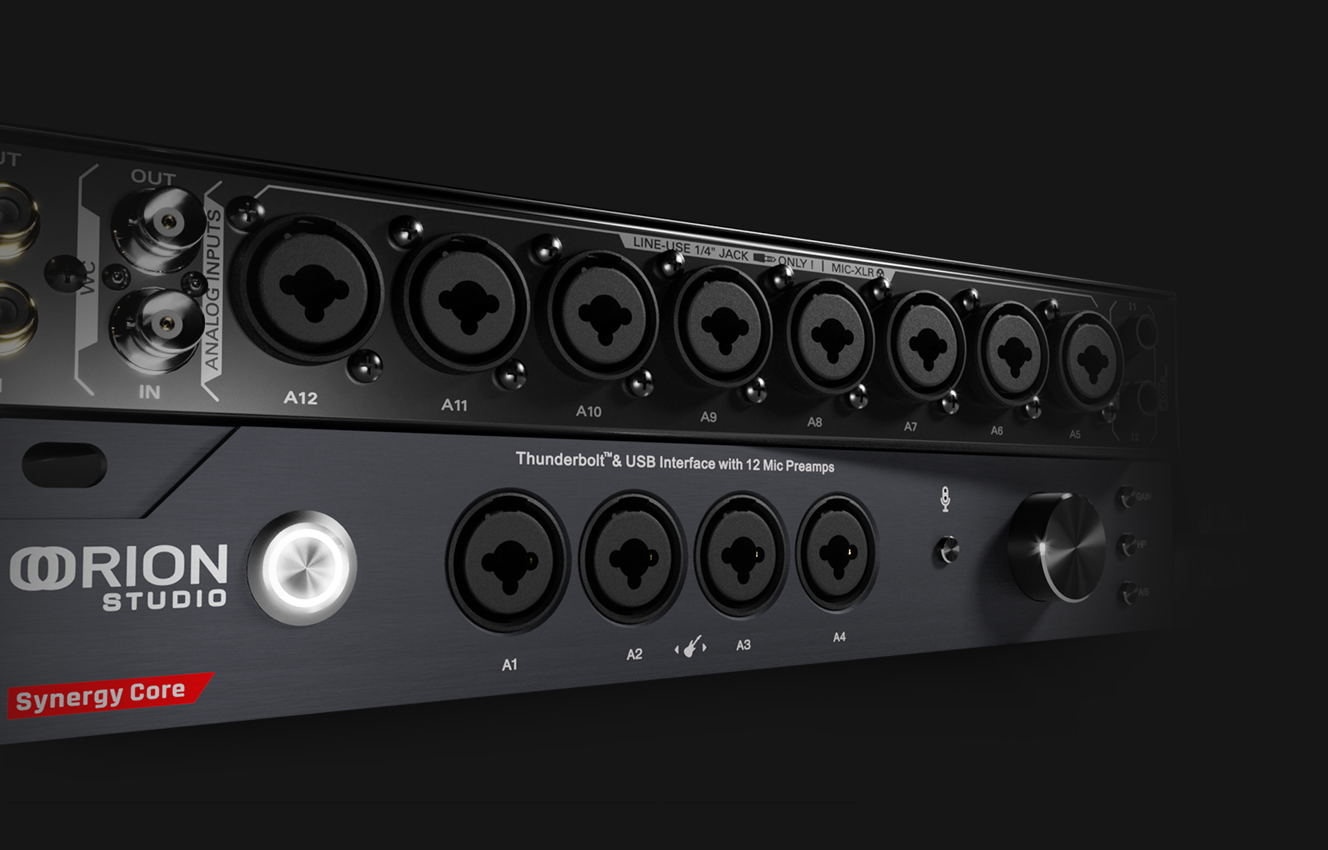
The Orion Synergy Studio offers onboard DSP and a whopping 12 on board mic pres at a price point lower than its closest competitor.
It’s really hard to not fixate on the presence of 12 XLR mic inputs on this unit. Is this a joke? [Spinal Tap Voice]: This one goes to 12.
Nope, this thing is for real. 12 modern analog to digital converters running Antelope’s legendary word clock, with preamps, all in 1 rack space.
Antelope engineers must be pretty keyed into the market, because in this case “all in the box” really means “all in the box.”
This does more than just set it apart from the usual 8 inputs, because in the studio, 12 is such a magic number. Having just 8 inputs has always created restrictions, and 16 can be overkill or cost prohibitive in many cases. Antelope engineers have always prioritized math, so I guess it makes sense.
Being able to track 10 channels of drums along with a ghost vocal and guitar is one thing. But the “Studio” part of the Orion Studio comes out further still with the other very thoughtful “in the box” features. One of them is having monitor A and B stereo outputs right on the unit, allowing for a multiple monitor set up without a sub-mixer or monitor switcher.
Having a USB option as an alternative to Thunderbolt 3 is also a nice touch in engineering and contingency planning. It’s also small-studio-friendly with 2 headphone mixes as well as 2 ReAmp instrument outputs if you want to fire up that special guitar amp. And then there’s the onboard DSP and included plugins.
Like every model in this roundup, the front panel’s vibe has a bit of an artistic thing going on. The Orion sports contemporary-looking lines and color schemes, with some metallic flair on the function buttons. The display on the unit itself is a bit small and utilitarian, but the giant and elegant meter display in the Control Panel software makes up for that. Just park the provided level display up on your main screen and it gives you every level indication you ever need.
For me, getting the driver to mount and launching the control panel software proved to be a somewhat less streamlined than the average on this list. Fortunately, Antelope’s website provides several common troubleshooting scenarios and provides live support as well.
Once the Control Panel is up and running there are a number of eye-openers starting with a color coded “routing” panel”. It acts like a virtual patch bay in so many ways, especially when you realize you can quickly and easily drag, drop, and route audio to Orion’s 2 sets of DSUB outputs (1-8 and 9-16).
When you throw in all the racks of Antelope’s virtual EQ’s and compressors, which are now giving the marketplace a real shake up, this is a centerpiece that could be an “only” piece for many studios.
And we haven’t even addressed the massive on-board processing power of 8 chips (6 DSP + 2 FPGA) that takes all strain off the computer, all with rock solid clock. With massive DSP power and connectivity, plus tons of newly-esteemed plugins, this Orion is a far more beneficial investment than any computer or DAW update.
Coming in at an even lower price than the Universal Audio’s Apollo 8Pre, this is Antelope’s attempt to jam even more value into the same kind of package, and could prove a very worthy contender to UA’s as of yet uncontested throne in this category.
[See next page for more…]
Please note: When you buy products through links on this page, we may earn an affiliate commission.








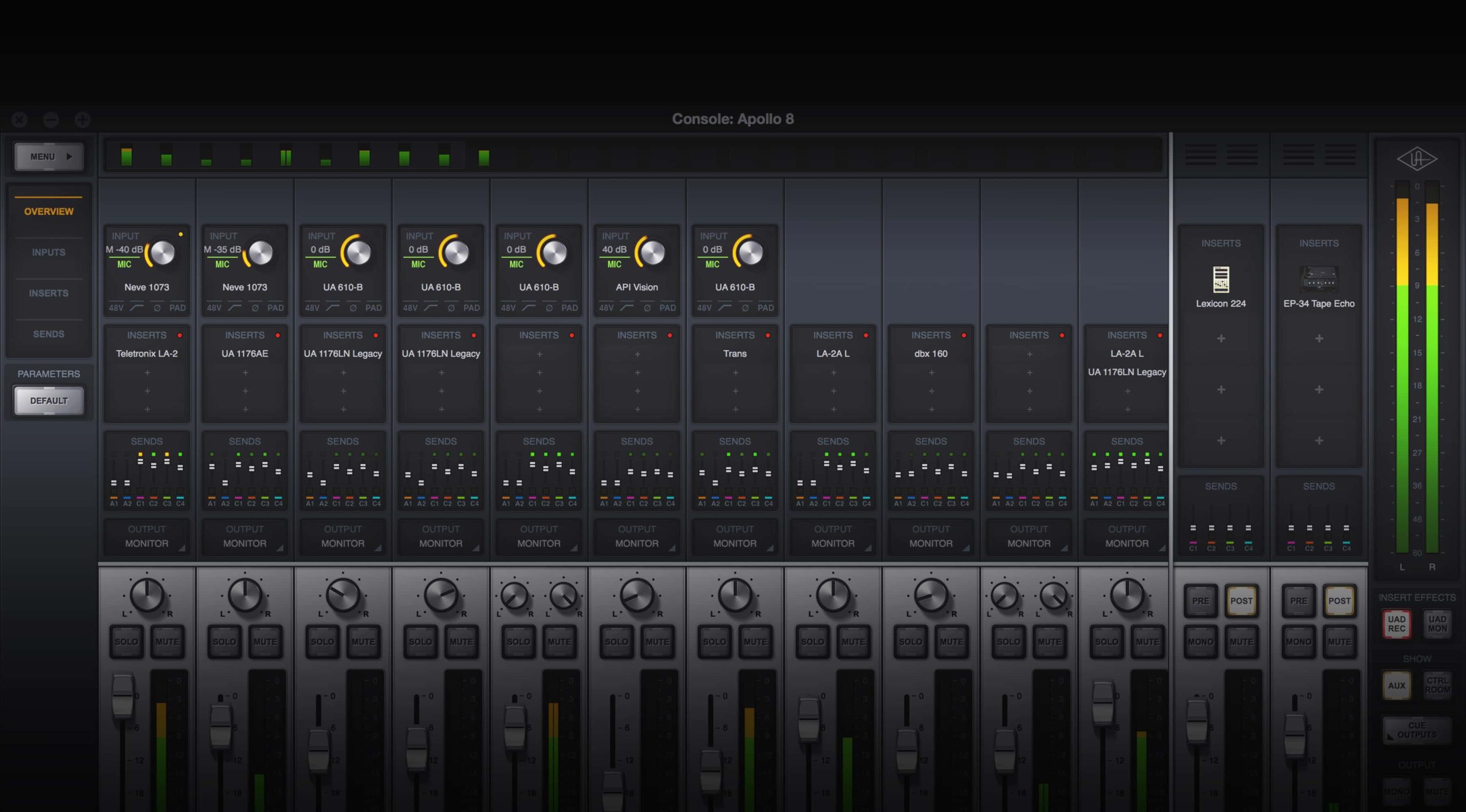

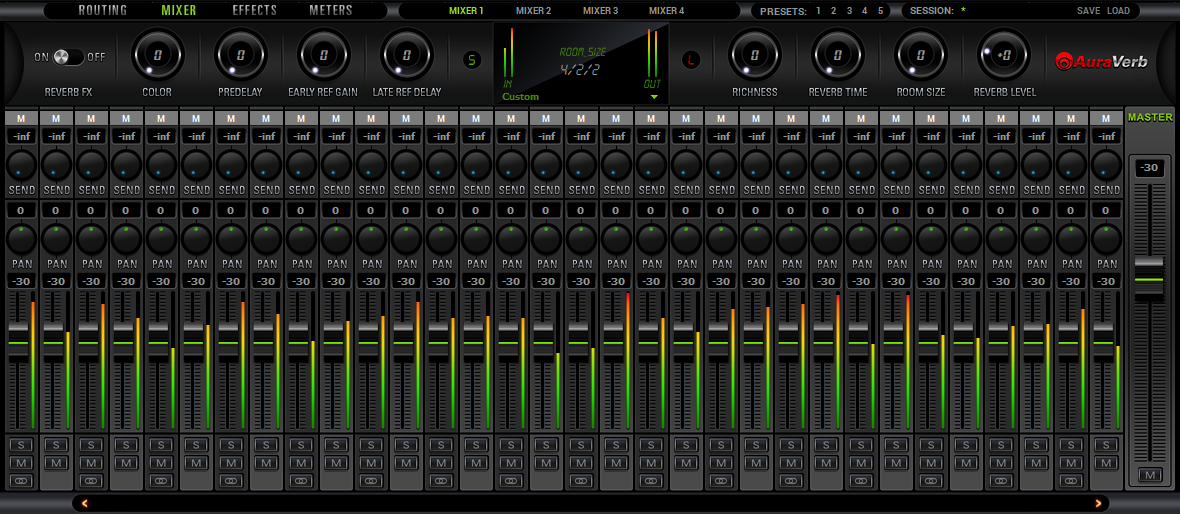
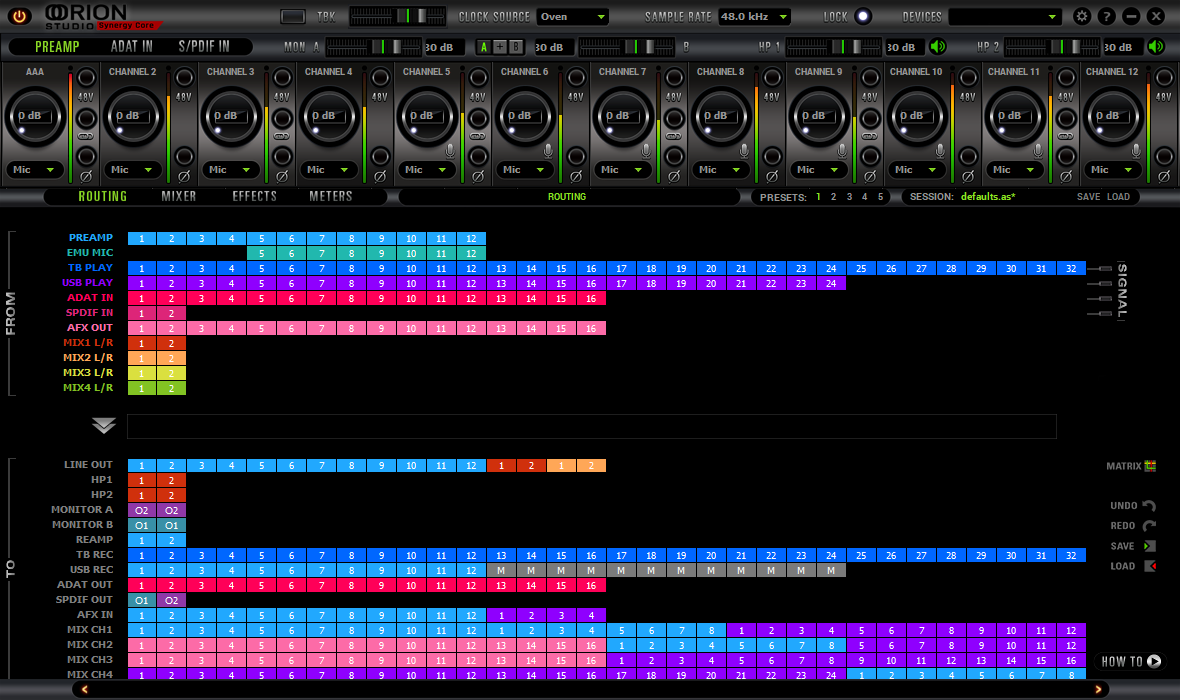
[…] Ultimately, upgrades become necessary with time, and having a studio or Read more… […]